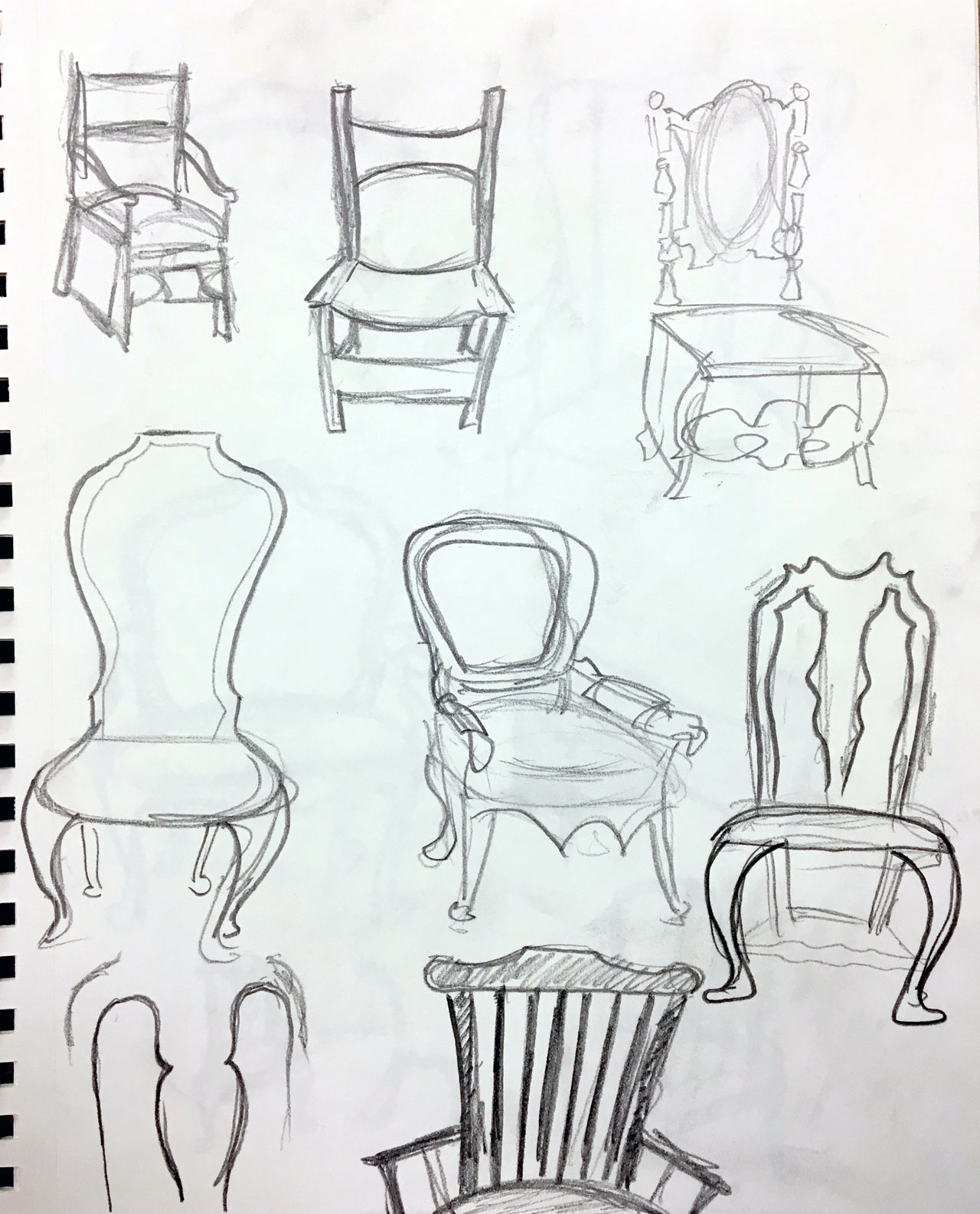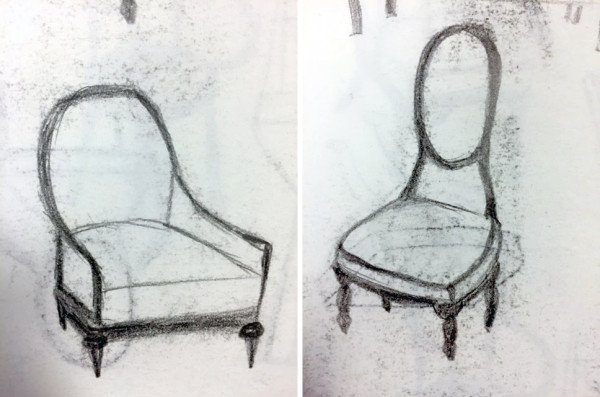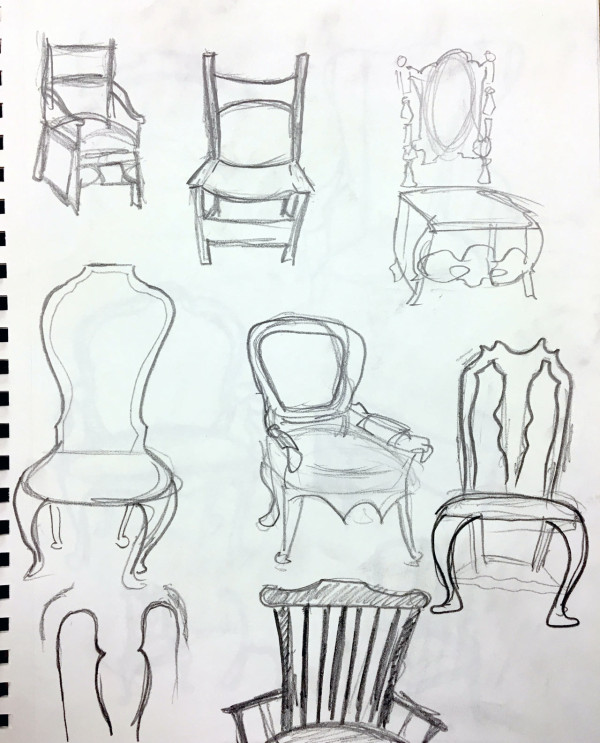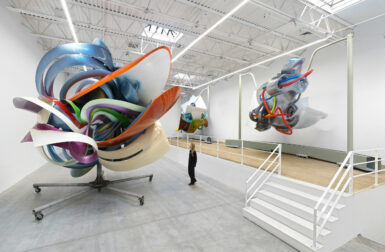Having taught this course alongside design school professors for the past 13 years, Grace has got her strategy down pat and it starts with a drawing exercise that seems simple, but is actually very complex. Here’s Grace:
“The pencil is one of the best eyes.”
– Louis Agassiz
For the past thirteen years, I have co-taught a class on chair design that is sponsored by Wilsonart. Early on I noticed a distinct lack of two critical skills missing from todays design curriculum: knowledge of the history of the chair and drawing experience. I decided to merge these needs into a single three-hour lecture, one I call The History of The Chair.
This Fall, we are at San Diego State University working with professor Matt Hebert. We have single semester to get our students to produce an inspiring and professional quality chair. We needed ways to enrich the student’s experience, encouraging them beyond their own perceived design capabilities.
I thought about my own schooling. For six years, I sat in dark lecture halls looking at one slide after another, trying to scribble down all the words the lecturer spoke. I was taught art history the old fashioned way, under the canon of formalism; analyzing and comparing style and form, studying one chronological piece of art at a time. This process familiarized me with masterpieces and taught me visual literacy. While my professors spoke of artists, dates and countries of origin I longed to draw what I saw.
The History of The Chair works this way; students come to the lecture with drawing materials and in three hours they draw 100 chairs from history. It’s exhausting. They can hardly speak at the end of the ordeal, but the quality of our students design work exponentially increases.
Why draw History? We listen with one part of the brain, write with another and draw with a third. Drawing is a simple, immediate way to get my students to understand chairs in three-dimensions. When we attend a lecture we are seeing and hearing, which are passive, but by drawing we become actively engaged, deepening our understanding of the subject. Drawing makes students immediately aware of structure, form, gesture, silhouette, and proportion – all of which are elements that work in unison to make a great design. They learn by drawing the best history has to offer.
The History of the Chair exercise is only the beginning. There is a correlation between the amounts of time students spend drawing and the number of good concepts they generate, therefore we encourage students to draw a multitude of chairs over several weeks. We often ask students to draw 30 variations of every good idea they have. The result is hundreds of drawings over a semester.
San Diego State University student Laila Said explained about her experience, “Great ideas don’t come from a single sketch, so for me it was really valuable to have several sketching sessions… I really want to squeeze every possible idea out of my brain and make sure I’ve used as much of my creativity and potential… I keep drawing because maybe the best ideas haven’t been drawn yet.”
Another one of this semester’s students, Ricky Lopez, explains: “Personally, the drawing greatly benefited me. The exercise affected my own design process; I began by drawing things that were very literal and sculptural and in seeing what I had drawn, I began to notice small elements that could be altered to reshape the focus of the piece. Drawing made me see. I eventually landed on a couple designs that greatly satisfied me.”
Drawing the history of the chair, and drawing multiple sketches, are crucially important exercises we do each year – it provides a deeper perspective of design while simultaneously evolving each students thinking. It hones the eye while training the hand and breaks down previous perceptions thus providing a solid clean slate on which students develop their own unique designs.
Stay tuned to see more progress as the students embark on this exciting course, and more from the SDSU students themselves.

















